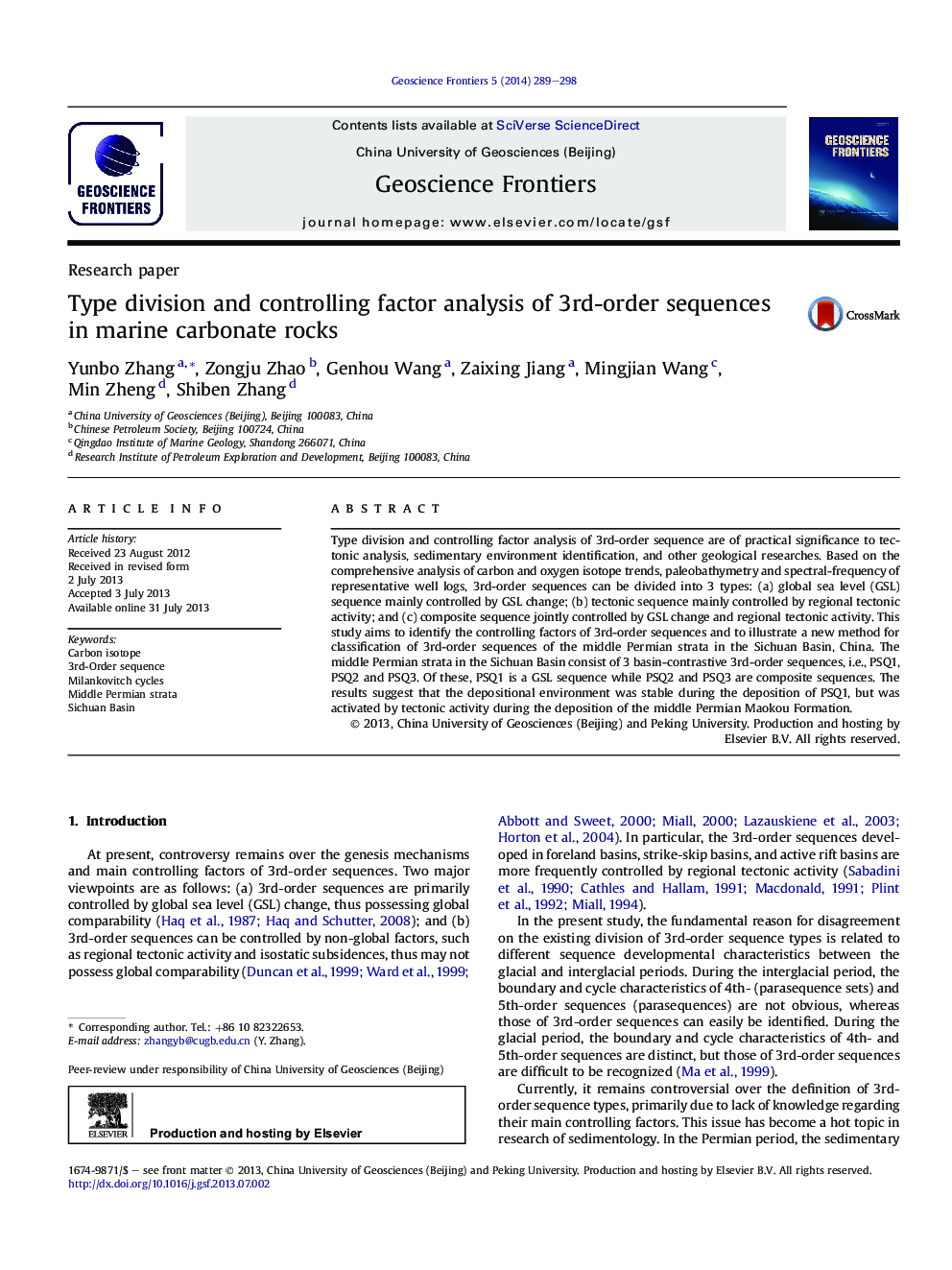| Article ID | Journal | Published Year | Pages | File Type |
|---|---|---|---|---|
| 4681799 | Geoscience Frontiers | 2014 | 10 Pages |
•We divided 3rd-order sequences into three types.•GSL and tectonic-GSL composite sequence have global comparability.•The depositional environment changes from stable to unstable during the middle Permian.
Type division and controlling factor analysis of 3rd-order sequence are of practical significance to tectonic analysis, sedimentary environment identification, and other geological researches. Based on the comprehensive analysis of carbon and oxygen isotope trends, paleobathymetry and spectral-frequency of representative well logs, 3rd-order sequences can be divided into 3 types: (a) global sea level (GSL) sequence mainly controlled by GSL change; (b) tectonic sequence mainly controlled by regional tectonic activity; and (c) composite sequence jointly controlled by GSL change and regional tectonic activity. This study aims to identify the controlling factors of 3rd-order sequences and to illustrate a new method for classification of 3rd-order sequences of the middle Permian strata in the Sichuan Basin, China. The middle Permian strata in the Sichuan Basin consist of 3 basin-contrastive 3rd-order sequences, i.e., PSQ1, PSQ2 and PSQ3. Of these, PSQ1 is a GSL sequence while PSQ2 and PSQ3 are composite sequences. The results suggest that the depositional environment was stable during the deposition of PSQ1, but was activated by tectonic activity during the deposition of the middle Permian Maokou Formation.
Graphical abstractFigure optionsDownload full-size imageDownload as PowerPoint slide
